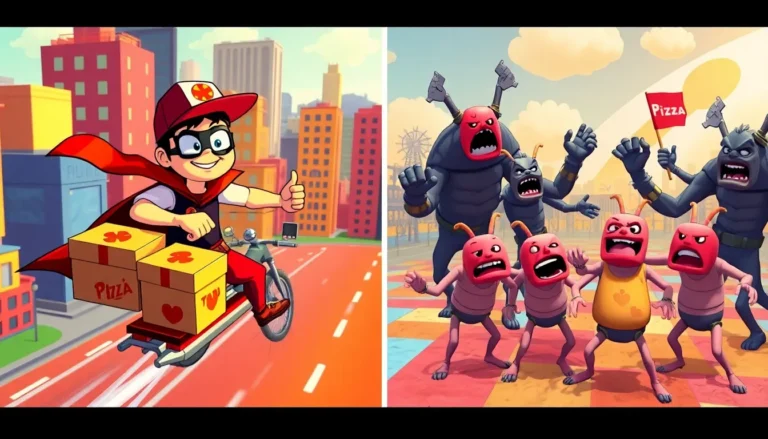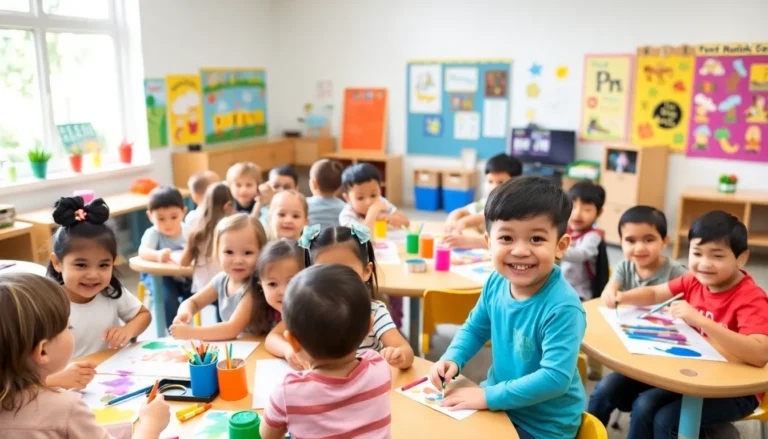Table of Contents
ToggleIn a world where routine often reigns supreme, creative thinking is the secret sauce that can spice up even the blandest of tasks. It’s like adding a dash of hot sauce to your morning eggs—suddenly, everything’s more exciting! Whether you’re brainstorming for a project or simply trying to solve everyday problems, tapping into your creative side can transform the mundane into the extraordinary.
Understanding Creative Thinking
Creative thinking encompasses the ability to generate unique ideas and solutions. It’s a mental process that enhances problem-solving skills, enabling individuals to approach challenges with fresh perspectives.
Definition of Creative Thinking
Creative thinking involves thinking outside the box and discovering innovative ways to tackle issues. This cognitive process combines imagination and logic, allowing for original ideas. Individuals can brainstorm concepts and visualize outcomes, transforming abstract thoughts into tangible plans. Problem solvers apply this skill across various fields, such as art, science, and business.
Importance of Creative Thinking
Creative thinking plays a crucial role in modern society. Innovative solutions arise from its application, driving progress in technology and the arts. Many industries benefit from fresh ideas that lead to improved efficiency and productivity. Engaging in creative thinking also fosters adaptability, essential in rapidly changing environments. By encouraging diverse viewpoints, teams can enhance collaboration and cultivate a culture of innovation.
Stages of Creative Thinking

Creative thinking unfolds through distinct stages, each contributing to the development of ideas and solutions. Understanding these stages helps individuals harness their creativity more effectively.
Preparation
Preparation involves gathering information and experiences relevant to the problem at hand. Individuals dive into research, absorbing knowledge from various sources, such as books, articles, and discussions. Engaging in brainstorming sessions sparks initial ideas. Participants explore multiple angles, allowing diverse perspectives to emerge. This stage lays the groundwork for deeper insights, giving direction to the creative process.
Incubation
Incubation refers to the phase where subconscious thought takes over after initial exploration. During this time, individuals may step away from the problem, allowing their minds to wander. He or she might pursue unrelated activities, such as walking or meditating. These breaks often lead to unexpected connections and revelations. Ideas simmer beneath the surface, increasing the likelihood of innovative solutions emerging later.
Inspiration
Inspiration strikes when individuals encounter the compelling idea or concept that ignites their creativity. This moment can occur spontaneously or after prolonged reflection. Sources of inspiration vary, ranging from nature to art or interactions with fellow innovators. Once inspired, individuals experience a surge of motivation, pushing them to develop their initial thoughts into tangible solutions. The excitement generated during this stage propels the creative process forward.
Evaluation
Evaluation involves critically assessing the generated ideas for feasibility and effectiveness. Participants reflect on the best concepts formed during earlier stages. They compare various options based on criteria like practicality, originality, and relevance to the problem. Constructive feedback from peers can enrich this assessment. This stage ensures that only the strongest ideas progress, fostering a focused approach to realizing creative solutions.
Techniques to Foster Creative Thinking
Various techniques help individuals enhance their creative thinking skills. Applying these methods encourages unique solutions and innovative ideas.
Brainstorming
Brainstorming serves as a powerful tool for idea generation. This method invites participants to voice their thoughts freely without judgment. Engaging a diverse group stimulates creativity and promotes collaborative thinking. A timer can aid in maintaining focus, encouraging rapid output of concepts. For added effectiveness, classify ideas into groups based on themes or relevance. Revisiting these ideas later refines thoughts for further exploration.
Mind Mapping
Mind mapping functions as a visual tool for organizing thoughts. Start with a central idea and branch out into related concepts, creating connections among them. Using colors and images enhances engagement while promoting memory retention. Participants can further add details or notes to each branch, expanding upon initial thoughts. This technique not only clarifies complex ideas but also reveals relationships that might not surface through linear thinking.
SCAMPER Method
The SCAMPER method consists of seven prompts designed to enhance creative thinking. These prompts include Substitute, Combine, Adapt, Modify, Put to another use, Eliminate, and Reverse. Each prompt encourages individuals to reimagine existing products or ideas creatively. For example, substituting one component might uncover new opportunities. By methodically applying each prompt, individuals stimulate fresh perspectives, generate alternative solutions, and refine outcomes effectively.
Barriers to Creative Thinking
Several barriers impede creative thinking, affecting individuals’ ability to generate innovative ideas. Understanding these barriers helps in overcoming them.
Fear of Failure
Fear of failure significantly hinders creative thinking. This fear can paralyze individuals, preventing them from taking risks. Many people worry about negative judgment and potential consequences. Environment influences this anxiety; a critical atmosphere stifles creativity. When individuals reframe their perception of failure as a learning experience, they unlock their creative potential.
Lack of Time
Lack of time serves as a major barrier to creative thinking. Busy schedules consume focus and energy, leaving little room for reflection. Individuals often prioritize immediate tasks over creative exploration. Scheduling dedicated time for creative activities can enhance idea generation. Allowing moments of solitude or downtime encourages fresh thinking and fosters innovation.
Rigid Thinking
Rigid thinking constrains the creative process. Established habits and fixed mindsets limit flexibility in thought. Individuals often cling to conventional solutions, dismissing novel approaches. Embracing a more open mindset invites diverse perspectives and possibilities. Techniques like brainstorming or mind mapping can break down rigid thought patterns and stimulate creativity.
Creative thinking is essential for transforming the mundane into the extraordinary. By embracing unique ideas and innovative solutions, individuals can enhance their problem-solving abilities and drive progress across various fields. The journey through the stages of creative thinking—Preparation, Incubation, Inspiration, and Evaluation—provides a structured approach to unlocking one’s creative potential.
Overcoming barriers like fear of failure and rigid thinking is crucial for fostering a culture of innovation. By adopting techniques such as brainstorming and mind mapping, individuals can cultivate an environment that encourages collaboration and diverse perspectives. Ultimately, nurturing creative thinking not only boosts personal growth but also contributes to greater efficiency and productivity in any endeavor.







